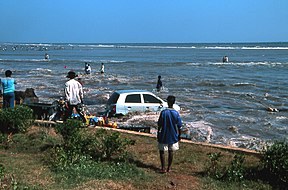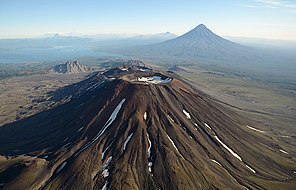
A natural disaster is the highly harmful impact on a society or community following a natural hazard event. Examples of natural hazard events include floods, droughts, earthquakes, tropical cyclones, volcanic activity, wildfires. A natural disaster can cause loss of life or damage property, and typically leaves economic damage in its wake. The severity of the damage depends on the population's disaster preparedness and on the existing infrastructure. Scholars have been saying that the term natural disaster is unsuitable and should be abandoned. Instead, the simpler term disaster could be used, while also specifying the category (or type) of hazard. A disaster is a result of a natural or human-made hazard impacting a vulnerable community. It is the combination of the hazard along with exposure of a vulnerable society that results in a disaster.
In modern times, the line between natural and human-made disasters is difficult to draw. In fact, the term natural disaster was called a misnomer already in 1976. Human choices around for example architecture, fire risk, and resource management potentially play a role in causing or worsening natural disasters. Climate change also has an impact on the frequency of those disasters that are caused by extreme weather hazards (or "climate hazards"), such as floods, heatwaves, wildfires and tropical cyclones.
Natural disasters can be worsened for example by inadequate building norms, marginalization of people and poor choices on land use planning. Many developing countries lack effective disaster risk reduction systems. This makes them more vulnerable to natural disasters than high income countries. An adverse event will only rise to the level of a disaster if it occurs in an area with a vulnerable population.
Types[edit | edit source]
Earthquake proofing for buildings[edit | edit source]

Earthquake-proofing for buildings is an essential issue in geologically unstable areas. In order to assess on whether a region lies in an area where substantial earthquakes occur, we first take a look at the earthquake hazard map. Another thing to realize is that, despite the name, the building can (almost) never be made completely earthquake-proof, in most cases, the house will still suffer damage or may still be destroyed, but the "earthquake-proofing" will prevent or reduce the loss of human lives in the process.





